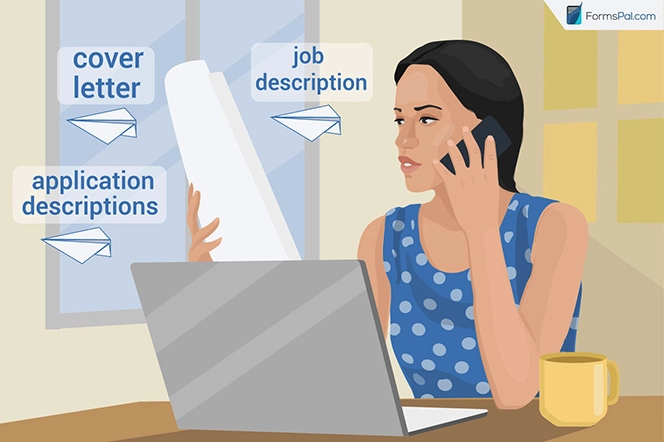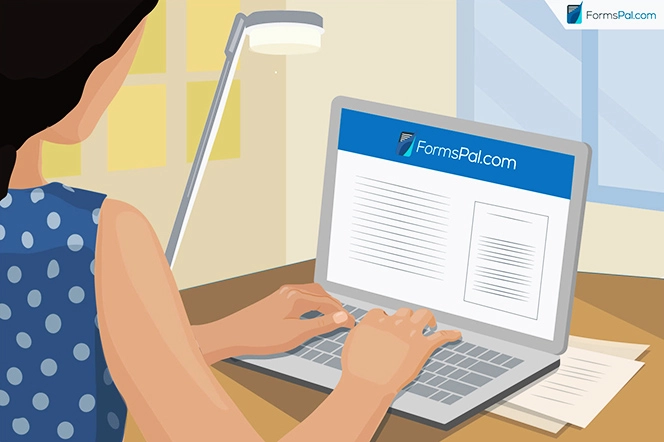Letter of Recommendation Template
A recommendation letter, also known as a reference letter, provides a comprehensive description of a specific person, including their experience, skills, and achievements in a particular sphere. A letter of recommendation is always seen as an added value to any candidate’s application, and as a general rule, written by someone who knows the candidate very well. People usually request letters of recommendation from a supervisor, manager, team lead, or mentor since they can better assess the applicant’s contribution to the common cause. However, letters of recommendation can also be written by co-workers, colleagues, team members, HR-employers, teachers, or other professionals.
Whether you need to request or write a letter of reference, it can be a difficult and time-consuming task. Therefore, you can use our free letter of recommendation template to create your reference at once. To save your time, we have also prepared the step-by-step guidelines and letter examples to help you easily cope with the writing process.
Build Your Document
Answer a few simple questions to make your document in minutes
Save and Print
Save progress and finish on any device, download and print anytime
Sign and Use
Your valid, lawyer-approved document is ready
What Should a Recommendation Letter Cover?
As a person who’s writing a recommendation letter, you are required to include such information as the employment or academic performance of the applicant, the applicant’s personal traits and accomplishments, reasons for your recommendation, and, of course, your contacts. Try not to make a recommendation letter too long—one page will be enough. Whether it’s an admission committee or a future employer, they are likely to get many recommendations in addition to their regular workload. So, it can be hard for them to take a deep dive into each recommendation letter. Therefore, it’s better to begin a letter with a hook—a significant achievement or strong acknowledgment of a person. A letter of recommendation is generally divided into three parts: introduction, main body, and conclusion.
Introduction
The introductory section includes the personal information of both the reference and the applicant. As a reference, you should mention your name and position and describe your relationship with the candidate. Then, you are expected to give some details about the applicant’s academic history, employment experience, skills, or professional accomplishments. To draw attention to the applicant, you may describe the most significant achievement or outstanding skill right away.
Main body
In the second section, you should precisely characterize the applicant as an employee or a student, describing the professional skills, academic performance, experience, effectiveness level, motivation, and contribution to the cause. The letter’s main body reveals unique personal qualities, values, knowledge, and work achievements that can single a person out of other applicants. It is crucial to support all facts with examples or anecdotes. Try to look at the applicant from all angles and describe some weaknesses too. It will add more credibility to a recommendation. It’s important to define the applicant’s ability to communicate, cooperate, and interact with other students or team members. Finish this section with an overall opinion on the applicant and your impression of them.
Conclusion
In the last paragraph, you are expected to comment on the person’s suitability for the chosen role. Remember that you are responsible for your recommendation; therefore, always explain and reasonably justify it. Finally, you should give your contact information. Contact details can also be included on the letterhead or after the sign-off.
Not all recommendations are devoted to a specific purpose. Someone may want to have a general recommendation letter just in case. Such reference letters are structured as mentioned above but include more general qualities, suitable for a wide range of applications.
When Do I Need a Recommendation Letter?
Sometimes, a letter of recommendation is required as an obligatory part of the application process. In other cases, it can serve as significant support for the candidate’s qualifications. Below you will find the basic occasions and types of recommendation letters.
Employment Reference
Employment references describe applicants from a professional perspective, including their experience, skills, achievements, and general contribution. Usually, a professional reference is written by an employer or a supervisor, but sometimes it can be a colleague or co-worker who gives a recommendation. People often use a letter of recommendation as leverage to increase opportunities when applying for a job. On the one hand, it happens when a person has little or no experience at all. On the other hand, a letter of recommendation can become a crucial factor in getting the desired position when applying for a highly competitive position. Recommendation letters are always required for senior positions such as top-level managers and specific professions, such as teachers or health professionals.
Academic Reference
Academic references are used by students applying for college, graduate, or undergraduate school as well as for a fellowship or scholarship program. Such a reference helps admissions committees to understand a student’s personality and motivation to study in a particular college or university, apart from the applicant’s academic performance. Generally, a student requests a letter of recommendation from teachers, instructors, professors, or mentors who are well aware of the personal qualities and achievements.
Personal Reference
Character or personal reference letter describes a person’s character, values, attitudes, and accomplishments. It is useful when applying for an immigrant visa or looking for a rental property. Landlords often make a background check of potential tenants, and a convincing letter of recommendation serves as important leverage in the overall tenants’ screening. This letter can also come in handy during the child adoption process or court actions. Depending on the occasion, a character reference can be written by neighbors, doctors, clients, landlords, everyone who knows the applicant well enough to give a positive recommendation.
How to Request a Letter of Recommendation
Everyone can find themselves in a situation when they need a recommendation letter. It’s especially relevant when applying for a job, college, or graduate school. Applying for a new job, consider requesting your direct supervisor or employer. If they reject to write your reference, you can address co-workers as the alternative. If you need an academic reference, consider addressing your teacher or professor. In general, seek a person you have a positive relationship with, who will make a reference letter credible and vivid. It’s a nice idea to always gather relevant references, so when the time comes, you will be well-prepared. Below you will find general guidelines to make a successful request for your recommendation.
Show the importance

When addressing your potential reference, make sure you show how valuable for you to have exactly this person write your recommendation letter. Always be polite and tactful, even if you know the person quite well. Nowadays, email is an excellent way to send your request. You can arrange a meeting in person, but it’s not an option when a potential reference has a tight schedule. It is admissible to be persistent, but you should not send mountains of requests. Also, try to provide your reference with an acceptable deadline.
Describe the application

If the chosen person knows you well and agrees to write a letter of recommendation, don’t forget to provide your reference with all the necessary information, including application descriptions. If it’s an employment letter of recommendation, send your reference a job description and even a cover letter. These documents will help to understand not only a job position but also the reasons why you are interested in and suitable for the role. It is also better to discuss together what should be definitely included in the letter.
Do not delay

Try not to wait for too long to find a suitable person to write a letter of recommendation. Your potential reference should have enough time to prepare a credible and convincing letter. Do not hesitate to include a letter of recommendation template and examples along with your request. It will make the work a bit easier and make the chosen person more likely to agree.
How to Write a Recommendation Letter
Before starting, you should think once again of whether you can give a good and convincing reference. If you feel that you cannot provide the applicant with positive feedback, it’s better to turn down the request politely. No one wants to get negative recommendations, which can ruin their career. If the answer is yes, then you can start your writing process. To avoid all the hassle associated with the writing, use the following step-by-step guidelines. Feel free also to use our letter of recommendation pdf-template.
Step 1. Prepare for the writing process
If you are determined to write a convincing reference, begin with a preparation stage. During this stage, you are expected to gather all of the necessary information about the candidate and the relevant application. If you want to refresh your knowledge about the person, you can request a resume. You can also ask for a job description (if it’s an employee) or a college description (if it’s a student). It would be helpful to discuss with the applicant specific achievements or qualities to be covered in the letter. After all the specifications, you can go straight to the writing. Do not hesitate to use letter of recommendation templates and examples.
Step 2. Personalize the salutation
Writers often use the phrase “To whom it may concern” as a salutation. However, it is acceptable when a recommendation letter is written without a particular purpose. In other cases, it is better to personalize the salutation, using “Dear Mr./Mrs./Ms. Last Name”. In case you don’t know the name, it’s acceptable to use “Dear Sir or Madam.” Depending on the occasion, you can alter the salutation, using “Dear Admissions Committee” or “Dear Recruiting Manager.”
Step 3. Introduce yourself
Begin the letter by introducing yourself—indicate your position and explain your relationship with the candidate. Introducing yourself and your connection to the applicant will confirm your competence to write such a recommendation.
Step 4. Follow the structure
Try to follow the structure template above to organize your letter. Therefore, your reference will be more logically arranged and easier to read. Reading the letter should feel like reading a story. Ideally, the letter’s length should not exceed two pages. Always try to stick to the appropriate format, using such standard fonts as Arial or Calibri with the 12-point size and the one-inch margin on all sides of the page. Do not forget to proofread the written letter. Even a few mistakes can spoil the general impression and cast doubts on your competence.
Step 5. Avoid generalization
When writing a letter, you should avoid such general words as “believe” or “think.” Generalizing things creates an impression that you don’t know the applicant well and, as a result, cannot make a professional recommendation. It is also important not to indicate too many positive things without support or examples. However, you should not use a cold and dry tone. Certainly, a recommendation letter should be written formally, but personal stories can make a letter more engaging.
Step 6. Leave your contact information
You are expected to leave your contact information (email and phone number) in an appropriate subject line if someone would like to contact you for further details. The contacts can be indicated on the letterhead or at the bottom of the letter.
Step 7. Sign the letter
Nowadays, it’s hard to imagine someone using traditional post offices to send a letter. Therefore, when sending your reference via email, you sign the letter with your name alone. Yet, if it’s required to deliver a hard copy, you should use a handwritten signature. All in all, make sure your letter has an appropriate format with the official company’s letterhead.
Letter of Recommendation Examples
Below you will find two examples of references—one is for college application, and another is for job application. These samples as well as our recommendation letter template are designed to make the writing process easy and quick.
Recommendation Letter Sample #1
November 25, 2020
Jennifer Smith
Director of Admissions
College of Design
Dear Ms. Smith,
I am pleased to recommend Mary Johnson for admission to the College of Design. I have known Mary since her enrollment in the High School of Art and Design, and I feel fortunate to work with Mary as her graphic design instructor these past four years. Every year, I watched her grow in her ability to cope with complex tasks and never give up while overcoming challenges. Mary’s remarkable performance in the Adobe Youth Voices Award Competition between over 2,000 students nationwide recently secured her second place.
As Mary’s teacher, I witnessed her approaches to develop her effectiveness constantly. In the beginning, she was a shy student, insecure about her abilities. Over time, she has managed to become the strongest student in class due to her persistence. She has learned all the essential graphic design basics such as composition, typography, color theory, page layout, logo design, and promotional advertising during her study. She has mastered such graphic editors as Adobe Photoshop and Canva. For the last year, Mary has managed to complete over ten projects. Her digital portfolio can prove that she is an outstanding student.
Sometimes, Mary overloaded herself with different projects at once while working as a freelancer. However, she managed to stay an organized student at school. Mary is a friendly and сompassionate person who always finds a way to help her classmates. She actively participated in extracurricular activities, organizing school events, and volunteering.
I am confident that Mary will be an excellent addition to the College of Design alumni. She will definitely bring a new creative perspective to your environment. If you have more questions about Mary’s character, abilities, or experience, feel free to contact me.
Sincerely,
Joan Farmer
Graphic Design Instructor
High School of Art and Design
1111 Main Street
Somewhere, CA 90044
555-555-5555
joan.farmer@artndesign.org
Recommendation Letter Sample #2
November 25, 2020
John Douglas
Human Resource Department
New Solutions, Inc
Dear Mr. Douglas,
I am writing to recommend Dina Mendes for the role of customer service manager at New Solutions, Inc. I have known Dina for three years, and during that time, I observed real outstanding communicative skills. Dina has worked as a sales team leader at App Solutions, Inc. from January 12, 2017, to November 20 of the current year, and managed to show her leadership abilities and determination.
Dina is an invaluable employee, always ready to help not only clients but also her team members. Her patience and empathy helped her deal even with the rudest customers, and her positive attitude always motivated the team. Her contribution as an employee to the improvement of the company’s service procedures is hard to overestimate.
As a person, Dina is a bit self-demanding, usually takes a lot of responsibilities. However, she has excellent time management skills and is capable of working under pressure. Dina is a compassionate and persuasive person, a true team player.
I strongly recommend Dina as an employee at New Solutions, Inc. I am confident that she will become an excellent addition to your company. If you have more questions about Dina’s experience, skills, or personal traits, please contact me at 555-5555-555.
Sincerely,
Chris Roland
CEO at App Solutions, Inc.
1111 Main Street
Somewhere, CA 90044
555-555-5555
chris.roland@appsolutions.org